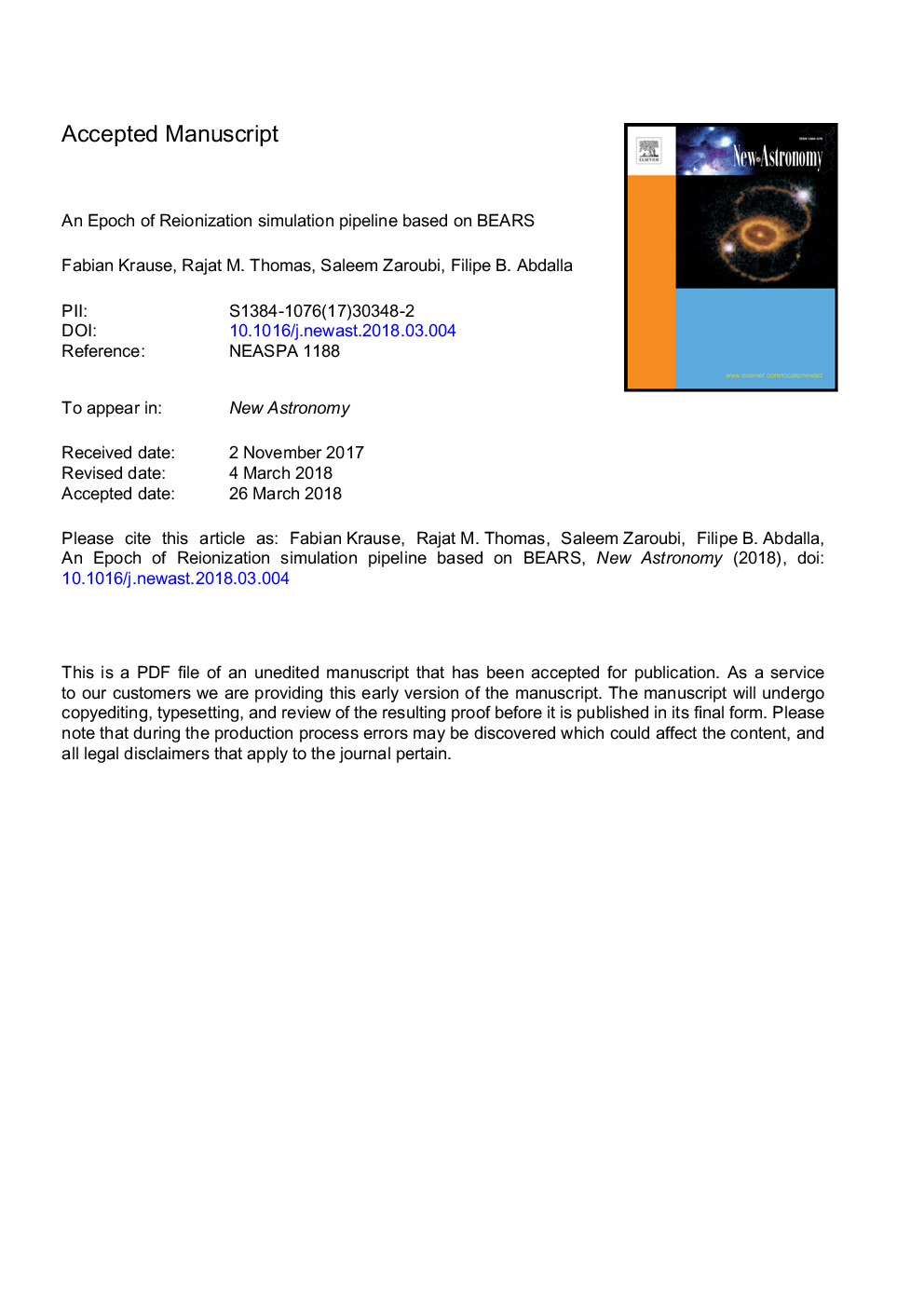| Article ID | Journal | Published Year | Pages | File Type |
|---|---|---|---|---|
| 8141264 | New Astronomy | 2018 | 33 Pages |
Abstract
The quest to unlock the mysteries of the Epoch of Reionization (EoR) is well poised with many experiments at diverse wavelengths beginning to gather data. Albeit these efforts, we are yet uncertain about the various factors that influence the EoR which include, the nature of the sources, their spectral characteristics (blackbody temperatures, power-law indices), clustering property, efficiency, duty cycle etc. Given these physical uncertainties that define the EoR, we need fast and efficient computational methods to model and analyze the data in order to provide confidence bounds on the parameters that influence the brightness temperature at 21-cm. Towards this goal we developed a pipeline that combines dark matter-only N-body simulations with exact 1-dimensional radiative transfer computations to approximate exact 3-dimensional radiative transfer. Because these simulations are about two to three orders of magnitude faster than the exact 3-dimensional methods, they can be used to explore the parameter space of the EoR systematically. A fast scheme like this pipeline could be incorporated into a Bayesian framework for parameter estimation. In this paper we detail the construction of the pipeline and describe how to use the software which is being made publicly available. We show the results of running the pipeline for four test cases of sources with various spectral energy distributions and compare their outputs using various statistics.
Related Topics
Physical Sciences and Engineering
Physics and Astronomy
Astronomy and Astrophysics
Authors
Fabian Krause, Rajat M. Thomas, Saleem Zaroubi, Filipe B. Abdalla,
